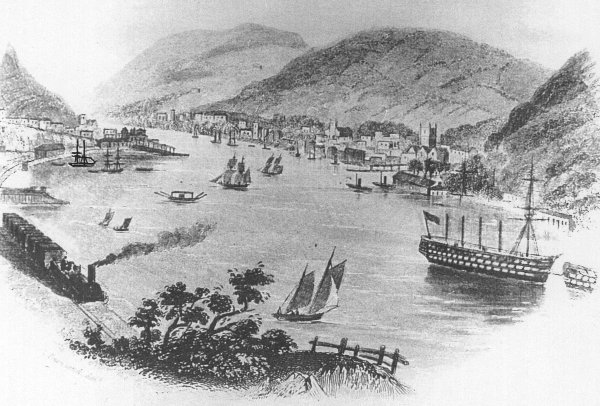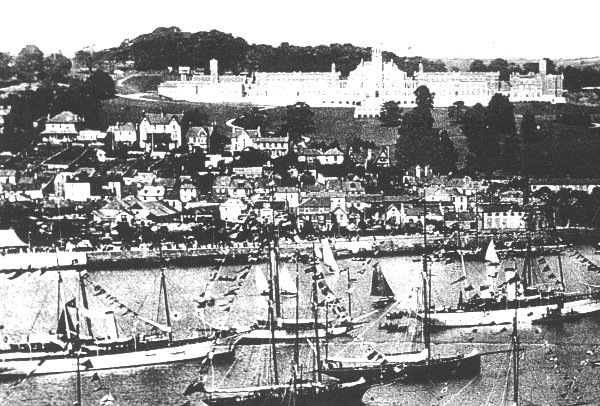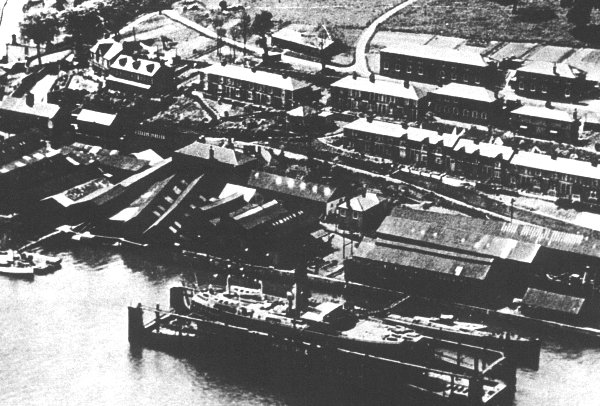Dartmouth post 1860
Please visit the Dartmouth Museum Page for more information.
Dartmouth lacked good inland communications. The hills were so steep that only packhorses were used before the 1820's. Then the old Mill Pool was drained and a market built on the reclaimed land. A new road to Townstal was constructed and for the first time wheeled transport could enter and leave the town.

1865 The new broad gauge train steams out of Kingswear Station. The training ships Britannia and Hindustan are moored in the river. The old Higher ferry powered by two horses can be seen crossing the river. Despite this, Dartmouth did not emerge from the slump until the 1860's. In 1863 the Royal Navy decided to train naval cadets on the Dart and stationed first "Britannia", then the "Hindustan", in the river for the purpose. In 1864 the railway arrived in Kingswear. Both events boosted the economy. The old ships were replaced by the new Naval College on land, completed in 1905, and the Navy has been in the town ever since.

The railway station at Kingswear around 1880 with broad gauge trains. The Dolphin passenger ferry waits to take passengers across to Dartmouth. A new industry developed with the growth of steam-powered ships. The port became a bunkering station. At its height about 700 men, known as coal lumpers, loaded coal into the ships' bunkers while more worked on ships importing the coal.

Britannia Royal Naval College not long after it was completed in 1905. This Regatta photo shows the kind of large steam yachts built at Noss by Simpson Strickland.
On the river, during the 19th Century the local ferries were improved so that, by 1870, both the Higher and Lower Ferries could carry wheeled vehicles and were worked by steam. In the town, roads were widened by demolishing many old houses and an Embankment built by 1885. Shipbuilding revived when Philip & Son and Simpson Strickland competed for business. Simpson's who had moved to Noss in 1890 built steam sailing yachts for rich clients and thrived up until the First World War. Philip's built varied types of vessels and received orders from South America to the Far East.

Tourists landing from a paddle steamer on Slapton Sands in the early 1900's. From the early 20th century the town began to benefit from the tourist industry. People came by railway for holidays and enjoyed trips on steamers up to Totnes and out to sea.
Until the First World War the town prospered and although many men were lost, this war did not greatly affect the economy of the town. In 1918 Simpson Strickland was bought by its rival Philip's which became the main shipbuilding firm.

Philips and Son's shipyards at Sandquay around 1931, showing the floating dock.
After the war, between 1929 and 1935, the Embankment was extended enclosing Coombe Mud and linking up with the Higher Ferry to cope with growing numbers of cars. The general prosperity of the late 1930's ended abruptly with the outbreak of World War II.
Please visit the Dartmouth Museum Page for more information.


